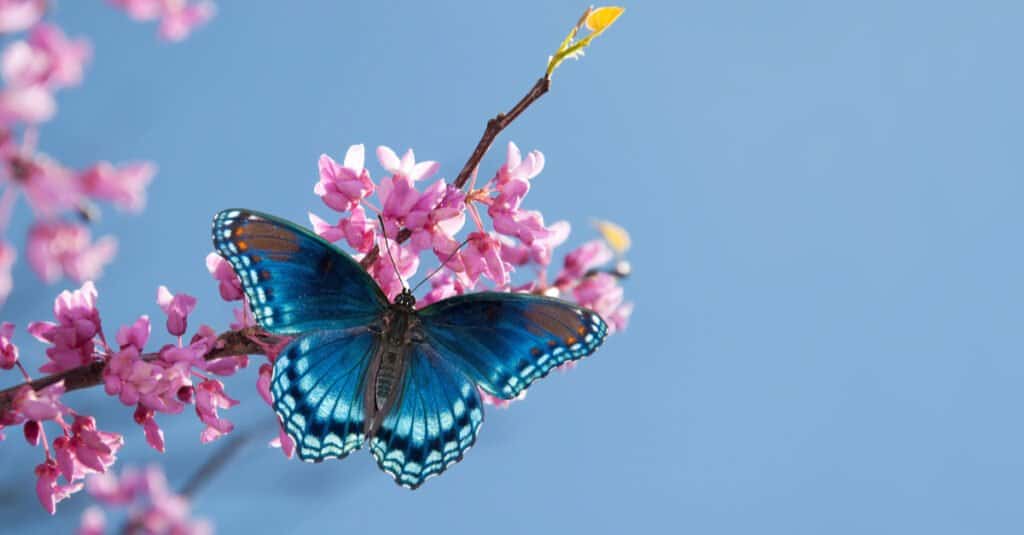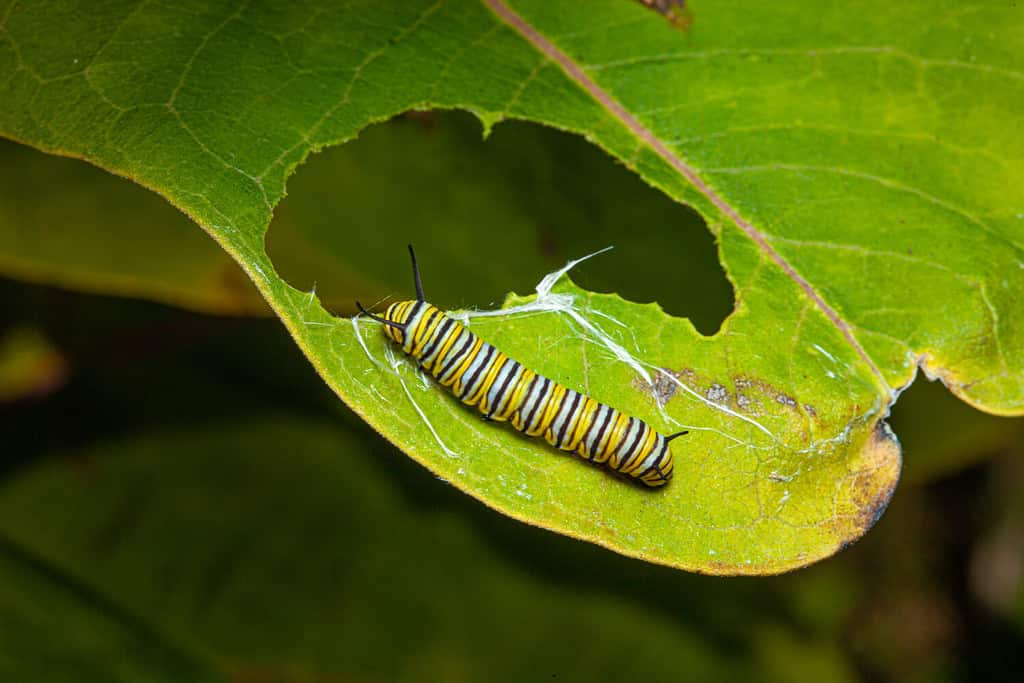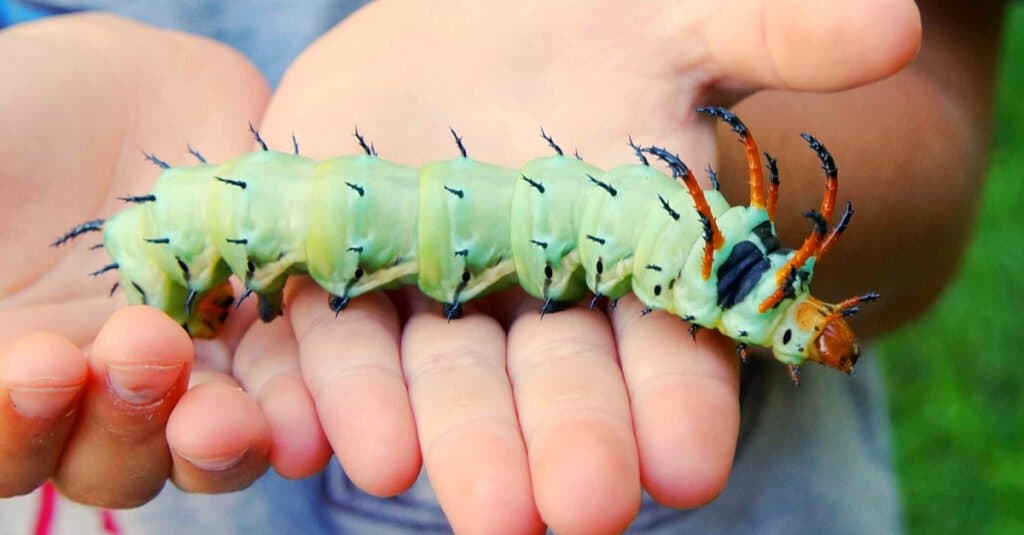This United Kingdom caterpillar goes deep undercover in a very dangerous environment! The ants in this clip would normally eat a caterpillar but she has some amazing tricks to get around this danger.
It starts when she produces a drop of honey dew from a gland on her back. This attracts a worker ant. Then, she takes in air so that her body inflates and as she releases it her body makes a sound that is very like the distress call of a queen ant. At the same time, she releases pheromones that further attract the worker who is, by now, completely under her spell! Wanting to be the hero of the hour, the worker “rescues” the caterpillar and races back into the nest with her.
Once inside the nest, she continues with these clever strategies and manages to convince the rest of the colony that she is their queen. You have to feel a bit sorry for the ants because this caterpillar spends the next six months eating ant larvae, which adds up to almost the entire ant colony! When she has had her fill, she pupates and forms a chrysalis. In Spring, she emerges as a stunning large blue butterfly.
See the full video of this incredible trick below!
Check Out the Amazing Clip!
The Large Blue Butterfly in the United Kingdom

The large blue butterfly prefers to live in acidic coastal grassland in the U.K.
©Anna Moskvina/Shutterstock.com
The stunning large blue butterfly (Phengaris arion) is a native species of the United Kingdom but it is very rare. It likes to live in well-drained grassland that is warm and is most often found on acidic coastal grassland and limestone grasslands.
As you would expect from the name, these butterflies are a deep blue! They also have distinctive black spots. In terms of size, they can reach 1.7 inches across (wingspan). Having already become extinct in the U.K., this species has been painstakingly re-introduced and is highly protected.
Red Ants and Large Blue Butterflies

Butterflies populations are essential to most ecosystems.
©Sari ONeal/Shutterstock.com
Red ants play a crucial role in the lifecycle of the large blue butterfly.
The caterpillars of large blue butterflies have a type of parasitism that exploits a host species, the red ant (Myrmica sabuleti). These caterpillars use chemical tricks to deceive the ants into carrying them to their nest.
This species of red ant offers the butterfly the highest survival rates.
Perhaps they are most easily fooled! However, the butterflies’ gain is definitely the ant’s loss. It takes a nest of around 350 workers to rear just one caterpillar!
A Normal Diet for Caterpillars

This monarch caterpillar grows bigger by eating leaves.
©K Hanley CHDPhoto/Shutterstock.com
Most caterpillars have a diet that consists mainly of leaves and other plant material. They feed on a wide variety of plants, including trees, shrubs, herbaceous plants, and even flowers. They will also eat fungi, lichens, and other organic matter. Depending on the species, some caterpillars may also eat woody material, such as bark.
Caterpillars generally feed by chewing or scraping the surface of a leaf or other plant material. As they feed, they consume both the plant material itself and the sap that is contained within it. They can also feed on the sap of fruits and vegetables.
While most caterpillars are herbivorous, there are a few species that are carnivorous. These caterpillars feed on small insects, such as aphids and even other caterpillars. Carnivorous caterpillars have specialized mouthparts that allow them to pierce and then suck up their prey.
For most caterpillars, a balanced diet of plant material is essential to their growth and development. They also need to get enough moisture and nutrients to ensure proper development. This is why it is important to ensure that caterpillars are provided with a healthy diet of fresh, organic material.
The Size of Caterpillars

This horned-devil caterpillar can be 6 inches long!
©Matt Jeppson/Shutterstock.com
Caterpillars come in a wide variety of sizes, ranging from just a few millimeters to over 6 inches in length. The size of a caterpillar will depend on the species, with the larger species usually being the most colorful and recognizable. Some species of caterpillar may even have a wingspan of several feet.
As caterpillars grow, they undergo several molts, shedding their skin and growing larger each time. During this process, the caterpillars may double or triple in size. For instance, a newly hatched monarch caterpillar will measure about one-third of an inch, while a full-grown adult can reach 2 inches in length.
The size of a caterpillar will also vary depending on the particular species and the amount of food available. Some species, such as the sphinx moth caterpillar, can grow rapidly when they have access to plenty of food, reaching between 3 and 4 inches in length. Other species may remain much smaller, even when well-fed.
Caterpillars are fascinating creatures, and their size can vary dramatically depending on the species. Despite their small size, caterpillars play an important role in the environment, as they eventually transform into beautiful butterflies and moths.
The photo featured at the top of this post is © sarawuth wannasathit/Shutterstock.com
Thank you for reading! Have some feedback for us? Contact the AZ Animals editorial team.







